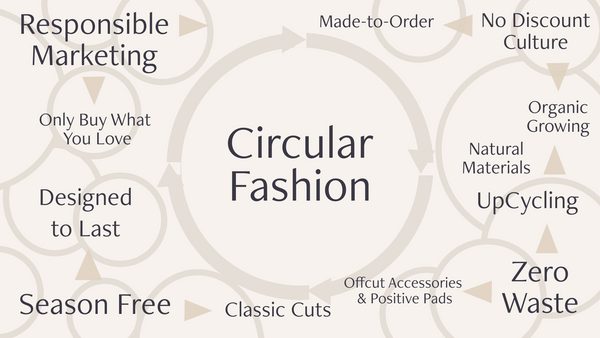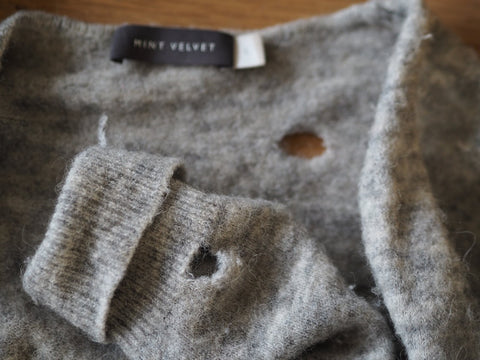What is circularity

We've all heard of the circular economy and circular fashion, but what does it take to really make it happen? It's about taking the supply chain and making it rounder - less of a straight path to landfill. The aim is to keep as much in the cycle as possible. While recycling materials at the end of their life is certainly better than binning them, little transparency about where these old items really go means they don't always have the fate we expect. Whether they end up falling off the truck, getting lost in transit or partly recycled, even recycling takes energy and a lot of lost material along the way. The surest way to make sure your garments get new life is to keep them in use as long as possible - in a truly transparent way.
Responsible Marketing
Many brands don't want customers to think like that, because their business model is built on customers discarding their garments and buy new ones all the time. Not us! We want people to buy only what they will love and treasure, which means we don't push sales or discount items. Our aim instead is to make only what's needed and nothing more. Instead we promote the values that we have - our makers, methods and natural materials - so that our customers can make an informed choice when buying a beautiful new item.

Zero-Waste Aims
Research estimates that the fashion industry is globally responsible for 10% of CO2 emissions, 20% of industrial wastewater, 24% of insecticides, and 11% of pesticides used. With the global fashion industry surpassing £2 trillion in value, it has grown by around 60% since 2011 and digital platforms have played a big part in fuelling our demand. In the US around 85% of all clothes thrown away are dumped into landfill or burned. While most of the rest is sent to be recycled, less than 1% is turned into new clothes, with mixed fabrics being difficult and intensive to separate and repurpose. While some items may make it to the charity shop, finding a happy new home, many are sent to developing countries where they suppress the local industry, and some will be too damaged to be sold on. So the moral of this story is that we need to close the loop, thinking about our items full lifecycle we can help to keep items in use for longer!

Another important part of the process is working to normalise imperfections, whether it's a stain that won't leave, a small hole that needs patching or the demands of an alteration as our body changes, it's not time to say good bye yet! We want to show you whats possible, get back into old habits of fixing rather than throwing and maybe even create some new inventions along the way. It's rare that anyone notices imperfections but it's a mentality forced upon us by a world with a hunger for consumption. A little fix-up might also help bring new meaning to an item and stop it getting pushed to the back of the wardrobe.

We're looking to build a network of like minded individuals with shared values and a community of menders, creatives and tailors who can take your old pieces and make them perfect again. Mayamiko is out to provide a platform that can connect you with the craftsperson you need, providing a chance to send your garment to mend and maybe even get a little gift from us. Whether you think you have the skills to share, know someone who does or want to know more, feel free to get in touch with us at info@mayamiko.com.
This is one way we at Mayamiko are working towards circularity, watch out for more options including rental and resale coming up over the next months!
More...
Organic is More Important Than You Think

